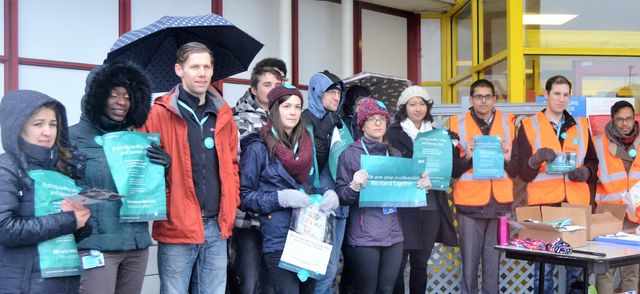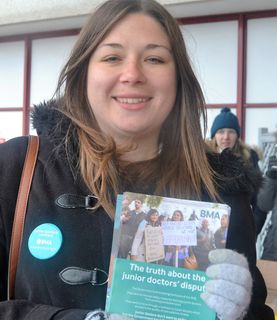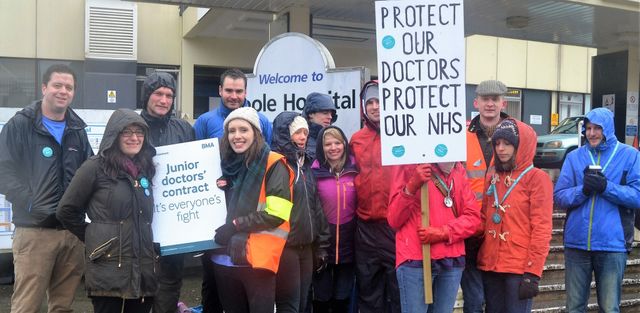William Blum

If the American presidential election winds up with Hillary Clinton vs. Donald Trump, and my passport is confiscated, and I’m somehow FORCED to choose one or the other, or I’m PAID to do so, paid well … I would vote for Trump.
My main concern is foreign policy. American foreign policy is the greatest threat to world peace, prosperity, and the environment. And when it comes to foreign policy, Hillary Clinton is an unholy disaster. From Iraq and Syria to Libya and Honduras the world is a much worse place because of her; so much so that I’d call her a war criminal who should be prosecuted. And not much better can be expected on domestic issues from this woman who was paid $675,000 by Goldman Sachs – one of the most reactionary, anti-social corporations in this sad world – for four speeches and even more than that in political donations in recent years. Add to that Hillary’s willingness to serve for six years on the board of Walmart while her husband was governor of Arkansas. Can we expect to change corporate behavior by taking their money?
The Los Angeles Times ran an editorial the day after the multiple primary elections of March 1 which began: “Donald Trump is not fit to be president of the United States,” and then declared: “The reality is that Trump has no experience whatsoever in government.”
When I need to have my car fixed I look for a mechanic with experience with my type of auto. When I have a medical problem I prefer a doctor who specializes in the part of my body that’s ill. But when it comes to politicians, experience means nothing. The only thing that counts is the person’s ideology. Who would you sooner vote for, a person with 30 years in Congress who doesn’t share your political and social views at all, is even hostile to them, or someone who has never held public office before but is an ideological comrade on every important issue? Clinton’s 12 years in high government positions carries no weight with me.
The Times continued about Trump: “He has shamefully little knowledge of the issues facing the country and the world.”
Again, knowledge is trumped (no pun intended) by ideology. As Secretary of State (January 2009-February 2013), with great access to knowledge, Clinton played a key role in the 2011 destruction of Libya’s modern and secular welfare state, sending it crashing in utter chaos into a failed state, leading to the widespread dispersal throughout North African and Middle East hotspots of the gigantic arsenal of weaponry that Libyan leader Moammar Gaddafi had accumulated. Libya is now a haven for terrorists, from al Qaeda to ISIS, whereas Gaddafi had been a leading foe of terrorists.
What good did Secretary of State Clinton’s knowledge do? It was enough for her to know that Gaddafi’s Libya, for several reasons, would never be a properly obedient client state of Washington. Thus it was that the United States, along with NATO, bombed the people of Libya almost daily for more than six months, giving as an excuse that Gaddafi was about to invade Benghazi, the Libyan center of his opponents, and so the United States was thus saving the people of that city from a massacre. The American people and the American media of course swallowed this story, though no convincing evidence of the alleged impending massacre has ever been presented. (The nearest thing to an official US government account of the matter – a Congressional Research Service report on events in Libya for the period – makes no mention at all of the threatened massacre.) (1)
The Western intervention in Libya was one that the New York Times said Clinton had “championed”, convincing Obama in “what was arguably her moment of greatest influence as secretary of state.” (2) All the knowledge she was privy to did not keep her from this disastrous mistake in Libya. And the same can be said about her support of placing regime change in Syria ahead of supporting the Syrian government in its struggle against ISIS and other terrorist groups. Even more disastrous was the 2003 US invasion of Iraq which she as a senator supported. Both policies were of course clear violations of international law and the UN Charter.
Another foreign-policy “success” of Mrs. Clinton, which her swooning followers will ignore, the few that even know about it, is the coup ousting the moderately progressive Manuel Zelaya of Honduras in June, 2009. A tale told many times in Latin America. The downtrodden masses finally put into power a leader committed to reversing the status quo, determined to try to put an end to up to two centuries of oppression … and before long the military overthrows the democratically-elected government, while the United States – if not the mastermind behind the coup – does nothing to prevent it punish the coup regime, as only the United States can punish; meanwhile Washington officials pretend to be very upset over this “affront to democracy”. (See Mark Weisbrot’s “Top Ten Ways You Can Tell Which Side The United States Government is On With Regard to the Military Coup in Honduras”.) (3)
In her 2014 memoir, “Hard Choices”, Clinton reveals just how unconcerned she was about restoring Zelaya to his rightful office: “In the subsequent days [after the coup] I spoke with my counterparts around the hemisphere … We strategized on a plan to restore order in Honduras and ensure that free and fair elections could be held quickly and legitimately, which would render the question of Zelaya moot.”
The question of Zelaya was anything but moot. Latin American leaders, the United Nations General Assembly, and other international bodies vehemently demanded his immediate return to office. Washington, however, quickly resumed normal diplomatic relations with the new right-wing police state, and Honduras has since become a major impetus for the child migrants currently pouring into the United States.
The headline from Time magazine’s report on Honduras at the close of that year (December 3, 2009) summed it up as follows: “Obama’s Latin America Policy Looks Like Bush’s”.
And Hillary Clinton looks like a conservative. And has for many years; going back to at least the 1980s, while the wife of the Arkansas governor, when she strongly supported the death-squad torturers known as the Contras, who were the empire’s proxy army in Nicaragua. (4)
Then, during the 2007 presidential primary, America’s venerable conservative magazine, William Buckley’s National Review, ran an editorial by Bruce Bartlett. Bartlett was a policy adviser to President Ronald Reagan, a treasury official under President George H.W. Bush, and a fellow at two of the leading conservative think-tanks, the Heritage Foundation and the Cato Institute – You get the picture? Bartlett tells his readers that it’s almost certain that the Democrats will win the White House in 2008. So what to do? Support the most conservative Democrat. He writes: “To right-wingers willing to look beneath what probably sounds to them like the same identical views of the Democratic candidates, it is pretty clear that Hillary Clinton is the most conservative.” (5)
During the same primary we also heard from America’s leading magazine for the corporate wealthy, Fortune, with a cover featuring a picture of Mrs. Clinton and the headline: “Business Loves Hillary”. (6)
And what do we have in 2016? Fully 116 members of the Republican Party’s national security community, many of them veterans of Bush administrations, have signed an open letter threatening that, if Trump is nominated, they will all desert, and some will defect – to Hillary Clinton! “Hillary is the lesser evil, by a large margin,” says Eliot Cohen of the Bush II State Department. Cohen helped line up neocons to sign the “Dump-Trump” manifesto. Another signer, foreign-policy ultra-conservative author Robert Kagan, declared: “The only choice will be to vote for Hillary Clinton.” (7)
The only choice? What’s wrong with Bernie Sanders or Jill Stein, the Green Party candidate? … Oh, I see, not conservative enough.
And Mr. Trump? Much more a critic of US foreign policy than Hillary or Bernie. He speaks of Russia and Vladimir Putin as positive forces and allies, and would be much less likely to go to war against Moscow than Clinton would. He declares that he would be “evenhanded” when it comes to resolving the Israeli-Palestinian conflict (as opposed to Clinton’s boundless support of Israel). He’s opposed to calling Senator John McCain a “hero”, because he was captured. (What other politician would dare say a thing like that?)
He calls Iraq “a complete disaster”, condemning not only George W. Bush but the neocons who surrounded him. “They lied. They said there were weapons of mass destruction and there were none. And they knew there were none. There were no weapons of mass destruction.” He even questions the idea that “Bush kept us safe”, and adds that “Whether you like Saddam or not, he used to kill terrorists.”
Yes, he’s personally obnoxious. I’d have a very hard time being his friend. Who cares?
CIA motto: “Proudly overthrowing the Cuban government since 1959.”
Now what? Did you think that the United States had finally grown up and come to the realization that they could in fact share the same hemisphere as the people of Cuba, accepting Cuban society as unquestioningly as they do that of Canada? The Washington Post (February 18) reported: “In recent weeks, administration officials have made it clear Obama would travel to Cuba only if its government made additional concessions in the areas of human rights, Internet access and market liberalization.”
Imagine if Cuba insisted that the United States make “concessions in the area of human rights”; this could mean the United States pledging to not repeat anything like the following:
Invading Cuba in 1961 at the Bay of Pigs.
Invading Grenada in 1983 and killing 84 Cubans, mainly construction workers.
Blowing up a passenger plane full of Cubans in 1976. (In 1983, the city of Miami held a day in honor of Orlando Bosch, one of the two masterminds behind this awful act; the other perpetrator, Luis Posada, was given lifetime protection in the same city.)
Giving Cuban exiles, for their use, the virus which causes African swine fever, forcing the Cuban government to slaughter 500,000 pigs.
Infecting Cuban turkeys with a virus which produces the fatal Newcastle disease, resulting in the deaths of 8,000 turkeys.
In 1981 an epidemic of dengue hemorrhagic fever swept the island, the first major epidemic of DHF ever in the Americas. The United States had long been experimenting with using dengue fever as a weapon. Cuba asked the United States for a pesticide to eradicate the mosquito involved but were not given it. Over 300,000 cases were reported in Cuba with 158 fatalities.
These are but three examples of decades-long CIA chemical and biological warfare (CBW) against Cuba. (8) We must keep in mind that food is a human right (although the United States has repeatedly denied this. (9)
Washington maintained a blockade of goods and money entering Cuba that is still going strong, a blockade that President Clinton’s National Security Advisor, Sandy Berger, in 1997 called “the most pervasive sanctions ever imposed on a nation in the history of mankind”. (10)
Attempted to assassinate Cuban president Fidel Castro on numerous occasions, not only in Cuba, but in Panama, Dominican Republic and Venezuela. (11)
In one scheme after another in recent years, Washington’s Agency for International Development (AID) endeavored to cause dissension in Cuba and/or stir up rebellion, the ultimate goal being regime change.
In 1999 a Cuban lawsuit demanded $181.1 billion in US compensation for death and injury suffered by Cuban citizens in four decades “war” by Washington against Cuba. Cuba asked for $30 million in direct compensation for each of the 3,478 people it said were killed by US actions and $15 million each for the 2,099 injured. It also asked for $10 million each for the people killed, and $5 million each for the injured, to repay Cuban society for the costs it has had to assume on their behalf.
Needless to say, the United States has not paid a penny of this.
One of the most common Yankee criticisms of the state of human rights in Cuba has been the arrest of dissidents (although the great majority are quickly released). But many thousands of anti-war and other protesters have been arrested in the United States in recent years, as in every period in American history. During the Occupy Movement, which began in 2011, more than 7,000 people were arrested in about the first year, many were beaten by police and mistreated while in custody, their street displays and libraries smashed to pieces. (12) ; the Occupy movement continued until 2014; thus, the figure of 7,000 is an understatement.)
Moreover, it must be kept in mind that whatever restrictions on civil liberties there may be in Cuba exist within a particular context: The most powerful nation in the history of the world is just 90 miles away and is sworn – vehemently and repeatedly sworn – to overthrowing the Cuban government. If the United States was simply and sincerely concerned with making Cuba a less restrictive society, Washington’s policy would be clear cut:
>> Call off the wolves – the CIA wolves, the AID wolves, the doctor-stealer wolves, the baseball-player-stealer wolves.>> Publicly and sincerely (if American leaders still remember what this word means) renounce their use of CBW and assassinations. And apologize.>> Cease the unceasing hypocritical propaganda – about elections, for example. (Yes, it’s true that Cuban elections never feature a Donald Trump or a Hillary
Clinton, nor ten billion dollars, nor 24 hours of campaign ads, but is that any reason to write them off?)>> Pay compensation – a lot of it.>> Sine qua non – end the God-awful blockade.
Throughout the period of the Cuban revolution, 1959 to the present, Latin America has witnessed a terrible parade of human rights violations – systematic, routine torture; legions of “disappeared” people; government-supported death squads picking off selected individuals; massacres en masse of peasants, students and other groups. The worst perpetrators of these acts during this period have been the military and associated paramilitary squads of El Salvador, Guatemala, Brazil, Argentina, Chile, Colombia, Peru, Mexico, Uruguay, Haiti and Honduras. However, not even Cuba’s worst enemies have made serious charges against the Havana government for any of such violations; and if one further considers education and health care, “both of which,” said President Bill Clinton, “work better [in Cuba] than most other countries” (13) , and both of which are guaranteed by the United Nations “Universal Declaration of Human Rights” and the “European Convention for the Protection of Human Rights and Fundamental Freedoms”, then it would appear that during the more-than-half century of its revolution, Cuba has enjoyed one of the very best human-rights records in all of Latin America.
But never good enough for American leaders to ever touch upon in any way; the Bill Clinton quote being a rare exception indeed. It’s a tough decision to normalize relations with a country whose police force murders its own innocent civilians on almost a daily basis. But Cuba needs to do it. Maybe they can civilize the Americans a bit, or at least remind them that for more than a century they have been the leading torturers of the world.





